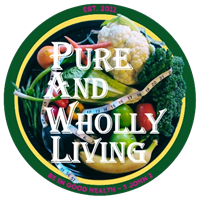I know that gardening must be the last thing on anyone’s mind, nowadays. And, if you value eating local produce that’s free of pesticides and GMO’s, winter gardening may be the perfect solution to getting seasonal, healthy produce when the mercury dips to indecent levels. Even harvesting one food from your backyard or indoor garden this winter is a great start. At the very least, you’ll feel more connected to your garden-fresh foods and may be more motivated to cook up healthy produce. Plus, there’s the fact that digging in the dirt or tending to a plant in your window box can be a total mood booster.
Many winter plants like tomatoes, squash, and bean plants are commonly harvested starting in December, because they won’t survive the first frost. However, the snow actually sweetens some produce, despite it being frost-covered and frozen down to the roots. Here are three to try your hand at growing this winter:
Parsnips: Full of fiber, folate, potassium, and vitamins C and E, this root vegetable only gets better over the long winter. The frozen-to-thaw cycle converts its starches into sugar, so it develops a stronger, sweeter flavor. Use fresh seeds and have patience, since parsnip seedlings take a while to germinate. Other root vegetables that stand up to snow are black radishes, rhubarb, and some types of carrots.
Kale: Varieties like Scotch and Winterbor will survive snow, although you might lose a few leaves in frigid temps. Some even say the more bitter the winter, the sweeter the kale! Consider planting a small starter this spring, so that the antioxidant-rich veggie gains a spot in next winter’s garden bed. Other leafy greens that do well in the winter chill are certain types of Swiss chard, mustard greens, spinach, and bok choy.
Garlic: In the fall, place a few heads of garlic in the ground, then spread a layer of leaves on top. Come spring, your bulbs will be ready to harvest! Hard-necked garlic varieties work best. They may need a little compost, some weeding, and moist soil to thrive, but these cloves can handle the big freeze, and are chock-full of heart-healthy vitamins such as vitamin B-6 and C.
Winter is also a good time to start dreaming up what you’ll plant this spring. Once the ground starts to thaw, consider planting sets of onions, snow peas, English peas or potatoes. They all have relatively short growing periods and work well if planted in hilled rows or raised beds of high-quality soil along with organic, vegetarian fertilizer.
If you’re really itching to sow some seeds, try cultivating a small indoor garden, now, that you can move outdoors once it’s spring. Of course, some vegetables and herbs can be grown right in your kitchen window in pots or boxes, and you can also keep some on a covered patio or in your garage. Most varieties require light and heat, which you can provide in the winter months with an inexpensive heat lamp. Start with smaller-sized veggies, such as banana peppers, bell peppers, and cherry tomatoes. Herb gardens of oregano, thyme, and basil are also relatively easy to tend to indoors. Any plant that does exceedingly well can just be plopped into the ground outside as it warms up!
If you discover that you don’t have such a green thumb after all, consider contributing to a community garden to work the land along with others who might have more of a natural knack for it.
Do you have a garden that you keep up with all year long? What other plants have you found that thrive in the winter? Tell us in the comments!
